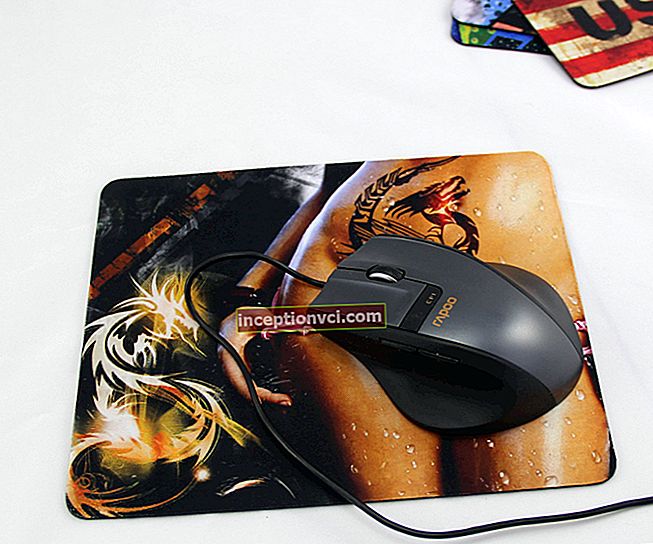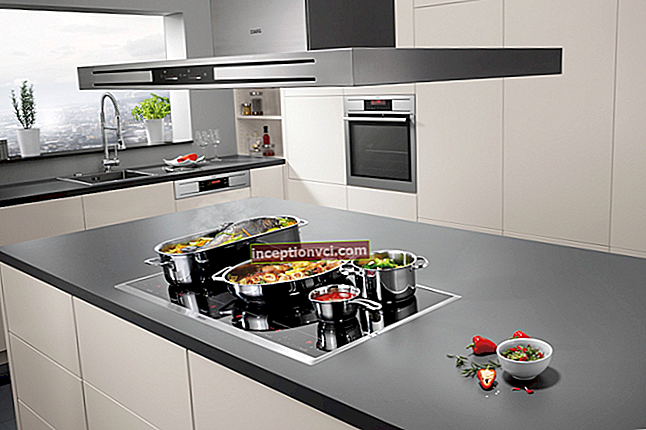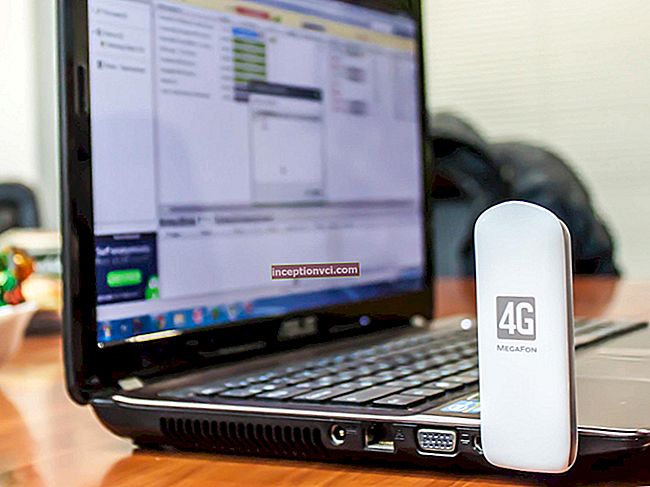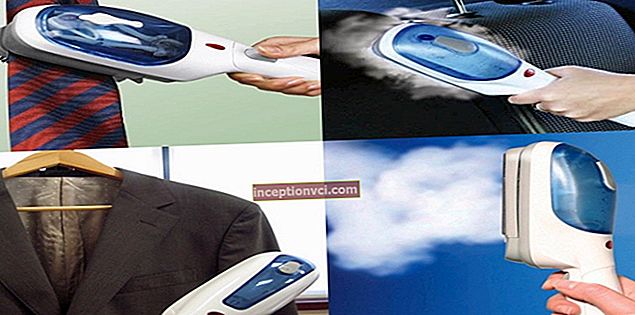INTRODUCTION
In the world of digital photography, manufacturers constantly and continuously introduce some kind of innovation into the released model - it may be a new idea, a function that expands the technical capabilities of the camera. The rest of the manufacturers are studying the reaction of the consumer. If an innovation turns out to be popular, then it is instantly duplicated, copied and launched into circulation.
It is all the more strange that for several years now Panasonic's Lumix TZ lineup has formally remained unique. Firstly, a large number of cameras of "supposedly mirror-like" design were released, with impressive zoom and traditionally advanced functional content, but they have lost their main advantage over SLR cameras - the compact size itself. Panasonic's TZ cameras - rugged, small, with an 8x to 12x zoom range - were, for some reason, the only ones in the firm's lineup. And it is not strange that many awards have been won during their sales, and they were very popular. Surprisingly, virtually none of the competing companies tried to replicate this success.
Probably the first significant step in this direction was taken by Canon - having put into circulation the PowerShot SX100 and, a little later, the PowerShot SX110. However, this is not a complete copy of TZ. The body material is plastic, the camera is large, and the zoom ratio, although it is equal to ten, is shifted towards the telephoto position - the lens focal length range from 36 to 360 equivalent mm cannot be called wide-angle (the TZ lineup also began with a 38- 380 mm equivalent for the TZ1, but by the time the SX100 was released, the angle position had expanded to 28-280 mm equivalent - models TZ3 and TZ2).
Only recently there have appeared models that can compete with the models of the TZ series - among them the Olympus mju 9000, and of course the hero of my review - the Canon PowerShot SX200 IS.
The matrix | 12 megapixels; resolution 4000x3000 pixels; 1/3 inches |
Lens | 12x optical zoom (28-336 mm equivalent), aperture F/3.4-5.3 plus 4x digital zoom |
Memory cards | Carrier SD / SDHC / MMC / MMC plus / HC MMC plus |
Display | 3 inches, 230K pixels |
File format | Photo - JPEG; video - MOV (H.264 and Linear PCM compression standards) up to 1280x720 pixels at 30 frames / second, with mono audio |
Communication | Joint AV / USB-out, HDMI interface (HTC-100 cord is optional) |
Dimensions (edit) | 103x61x38 mm |
Position in the model range | Betweenmodels PowerShot SX110 IS and PowerShot SX10 IS |
DESIGN

The SX200 aluminum body is available in three color schemes - blue, black and red. All three color schemes work well with shiny accents and silver accents. The SX200 is larger than most compact cameras, but it is still a pocket-sized camera (assuming you have a spacious pocket). Plus, the slightly increased size is a fair price for the versatility that a 12x zoom can provide.

The device is very comfortable in the hand - the right hand is meant - there is a slight thickening of the surface in the front and a notch for the thumb in the back. If we talk about support with the right hand, then it is not so simple. This is due to the fact that when the power is activated, the device behaves like a transformer - it makes a buzz and changes its appearance, the curtains open, the lens is transformed, and most importantly, a flash is hidden under the silver bar with the inscription "12.1 megapixels". By clicking on the bar, the flash opens, and you can no longer hide it - it remains to look out, regardless of whether you use it or not. Of course, this raised position of the flash helps to move it away from the axis of the lens and reduce the likelihood of “red-eye” appearing in the pictures taken, but it did not give me any discomfort. Although, this depends more on the manner of shooting (the position of the fingers when holding the camera with the right hand and supporting it with the left hand). If this is your first device, and you don't have any habits yet, then, most likely, the flash will not be a hindrance.

Despite this, if a constantly open flash does not give you any special problems, then the design solution simply seems dubious - a weak point, an additional node that, logically, can break. If you carry your camera on a strap, the flash will be a source of constant excitement - it can be beat, it gets caught on something ... As a result, the camera does not seem to be as strong and reliable.
In addition, from the outside, the device evokes the idea that it always works with the flash on, even if in fact it is not. Since flash photography is prohibited in museums and similar places, it can cause an unpleasant incident.
And also, the flash is quite powerful, it stably illuminates a medium-sized room. However, after it is triggered, the recharge is very long - about 7 seconds.

The SX200 is equipped with a solid lens, with a very large (for a compact camera) front lens diameter. The zoom of the lens is very significant - in telephoto position the projection of the lens is about 5 centimeters, and the latter becomes the dominant element of the entire structure, in comparison with the folded state.
The screen resolution is 230 thousand pixels - a few years ago it was considered high, but nowadays, when most models are equipped with a display with a resolution of twice (and sometimes four times), it can easily be called standard, or typical - but no more ... Despite this, the display is very high quality.
The camera does not have an optical viewfinder. This attribute, which was a necessity for compact cameras in the film era, has rarely been found lately, which is a pity. I believe this attribute is not at all useless. Firstly, even the highest quality display becomes poorly readable on a bright sunny day; the optical viewfinder is very convenient for these cases. Secondly, by turning off the display, you can decently save battery power and thereby extend the camera's operating time - in some cases this can be a decisive factor. Thirdly (a very relevant argument for high-zoom cameras such as the SX200) - when sighting through the viewfinder, it is easier to keep the camera still and thereby reduce the likelihood of getting a blurry image than holding it in front of you. Of course, the presence of the stabilizer prevents the user from smearing, nonetheless.

The tripod socket on the SX200 is not located on the same axis with the lens, but is shifted to the side. This location is not unusual at first glance, however, it provides free access to the compartment for removable media and battery - they can be easily replaced without removing the device from the tripod.
Note that the camera comes with a small manual containing a list of basic functions, and a more detailed manual (manual) is provided in electronic form on CD.
CONTROL

The power key is recessed into the body, thanks to this accidental pressing is excluded. This button is almost the only control that does not cause any complaints, and not strange. Despite the fact that the ergonomics of the camera is at a high level and the impressions are mostly good, the drawbacks could not be avoided and there are many of them.
The mode dial slightly protrudes above the plane of the case, and is also quite rigid. Rotation with two fingers is almost impossible, and if you use one finger, it slips (partly, this is facilitated by the influx above the screen). Nevertheless, the disc is quite large, the active mode is clearly visible - if only because the disc is "hardware", not software, and the mode is switched not on the display (the exception is the choice of the scene mode, namely, setting the disc to "Scene" - SCN).
The manufacturer's preferred method of controlling the zoom - the ring around the edge of the shutter button - I think is a very logical and convenient solution (compared to the buttons on the back). The only thing is the toothed protrusion (for the index finger), it is too small, I even wonder why - after all, the dimensions of the camera made it possible to make it larger. The rotation stroke, or rather the deflection of the zoom ring, is quite tight. The undoubted advantage of the zoom system is its two-speed performance. With a weak effort, the engine barely works, it takes about 5 seconds to fully zoom an object - very little, but the mode is designed for this (in order to choose the most accurate position). With a more confident deflection of the ring, the engine works faster, zooming takes less than 2 seconds. The two-speed zoom capability comes in handy when you remember that the camera has a 12x zoom lens.
The keys on the rear panel of the camera are rather large, but they are flush with the surface, as a result of which they are poorly perceived tactilely (the only exception is the Play key, it is recessed into the camera body, and it will not be a problem to find it with your finger).

Pleased with the presence of a programmable button. In the "View" mode, it is responsible for sending the image to print, and in shooting mode it can perform one of nine possible functions - Face detection (face selection), ISO sensitivity (sensitivity), WB, Custom WB (setting the white balance using a sample Press this key), Red-Eye Correction, Tele-converter (digital), i-Contrast (which I'll talk about later), Crop Grid, and Monitor Off.

Navipad keys are combined into one common disk, along the rim of which there is a toothed disk. Both the dial and the ring can be pressed in four directions, the effect is the same.

The "Right" navigation button is used to select the flash mode. In total, there are 4 options for the user to choose: Slow Sync, Forced On, Auto, and Off.

It is also possible to configure the flash in more detail, it is carried out in the menu.

Pressing the "Left" navigation button allows you to switch the focusing mode, among the possible options: Super Macro (in this case, the zoom does not function, and AF can be triggered from a distance of less than 1 centimeter from the front of the lens to the subject); Macro (the minimum distance is 2 centimeters at the wide-angle position of the lens, and with the subsequent zoom, the distance increases sharply - 80 centimeters at the telephoto position); Normal (standard AF mode, focusing possible at a distance of 30 cm or more); there is also the possibility of manual focusing - a distance scale and an increase in the central area of the frame to visually simplify the process.
By the way, there are two options for AF zones - Central or Face Recognition (definition). If you are focusing on a subject that does not completely overlap the center AF frame (for example, the tip of a knife or a leaf stem), then the autofocus algorithm may be wrong and trigger on the background. It's good that for such a case, the menu provides the ability to switch the size of the AF frame - Normal and Small. The strange thing is that there is no option to enable multi-zone AF, often in compact PowerShot cameras there is an option with 9 zones in the center of the frame.
The "Face Recognition" function, as a rule, is not of particular interest to me. Nevertheless, in the SX200 camera this function found a rather specific application and, as it seemed to me, a useful purpose - "Timer for face detection". If it works, the release will only work when the number of faces detected in the area of the frame becomes larger - an example of this would be if you put the camera on a tripod, aim it at your friends, and then you yourself run into the area of the frame.When it detects you in the frame, the camera will take a picture - or rather, a series of pictures (up to 10) in a row, one after the other. To switch the Timer Mode, use the Down button.
A timer implementation is nothing more than one indication that a camera has been assigned a certain "severity" level. In devices designed for beginners, the timer is automatically reset after taking a picture (apparently so as not to forget to turn it off by mistake), which can be a big problem when you shoot, for example, at night using a tripod (the timer is used to avoid jitter camera when the shutter is released) - there will be a need to constantly turn on the timer. It's good that everything is well thought out in the SX200, and the timer stays on until you turn it off - after all, this is a device with manual modes, and is aimed at advanced users.

Navigation button "Up" is responsible for switching on the exposure compensation. Both the numerical value and the scale are displayed on the screen, change very convenient (rotation of the control ring). The only unpleasant thing is that there is no live histogram - with its help, entering the exposure compensation becomes much more convenient and understandable. The possibility of viewing the histogram in the appropriate mode saves the situation a little - it's somehow strange to take a picture, see its histogram, then do it again with the introduced exposure compensation (and it is entered "by eye") and repeat this procedure again until the best result is achieved - very much long-term operation.
MENU
As with most Canon compacts, there are two different camera menu systems.
The first menu system is used to call up parameters "as needed" with the FUNC.SET key. By pressing this key on the left side of the screen, a scale of several sections is superimposed over the displayed image. You move through the sections, select the required one, and its possible values are displayed, from which you select the required one. Both the principle and design of this OSD have remained unchanged for several years, which is a good thing. This system will only cause positive emotions for users of Canon compacts.
Holding the SX200 in your hands, you notice that this is one of the first models from Canon, in which the graphical interface of the OSD menu has been updated. What can you say about him? Firstly, it has become animated - a scroll bar, expanding points. Of course, the design has become more modern and "aesthetically tastier". Apparently, this is what the developer was guided by. Did it add convenience? The answer is rather controversial. And the reason is that I'm just used to the old ... however, judge for yourself.

Previously, all menu sections were located on one "page" and fit into the screen area. Now the list must be scrolled, in order to get to the necessary section (despite the fact that there are no more - 8 sections, as, for example, in the Power Shot G10). And this is not very good. In addition, the parameter you have selected is always in the center of the screen, while in the previous menu, each parameter was clearly in its place, and even by their location, it was easy to understand in which direction to move. In addition, having reached the "extreme" (in the column) parameter, only 4 out of 8 parameters are visible on the monitor, all the rest go beyond the limits. Although the column is closed in a ring, there are three empty spaces.
The lack of attachment of menu sections to a fixed position on the display entailed another negative nuance. In two design options, it is possible to display active parameter settings as pictograms (using the DISP button). But, in the old version of the design, the icon of each parameter was located on the monitor in the same place as in the menu; in other words, when shooting, the icons are passive, and are intended only for your information, but are activated when the menu is turned on - but at the same time they retain their location (illustration - the old-style on-screen menu).
In the new design, the icons are in one place of the display during shooting, and when in the menu, they are in different places (as a result of the column's mobility). One gets the impression that new people were involved in the development of the menu, who did not know how good the old system was. And, unfortunately, everything changed.

The column of the new menu is organized with variable brightness - the currently active parameter is brightly "highlighted", and the rest gradually darken as you move away. Everything looks very beautiful, especially when scrolling - as if you were spinning a drum with pictograms printed on it. But on a bright sunny day, at a time when the image is already poorly visible, the darkened parameters are too difficult to distinguish by eye.

The positive nuances of the new menu design (besides its aesthetics) include a list of different parameter values - in the new system it is not strip-like, but displayed as a separate column, directly next to the menu items - in most cases, such their placement contributes to less overlap of the objects themselves. In addition, all items are accompanied by on-screen tips - what kind of parameter, its purpose. It is possible to disable this feature, but for beginners it will be very useful.

The second menu system is the so-called in-chamber menu, as you might guess it is turned on with the "MENU" key. It configures aspects of the camera itself (sound volume, file naming, "screensaver", graphical interface language, etc.), switching between different shooting parameters (parameters configured in the OSD menu are not duplicated in this menu) - about them I'll talk in the next paragraph of the review.
End of the first part. To be continued...








